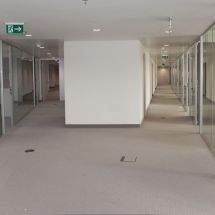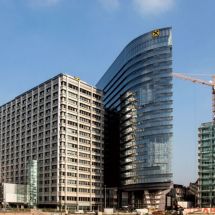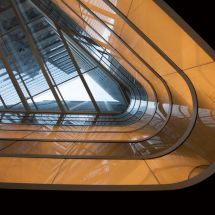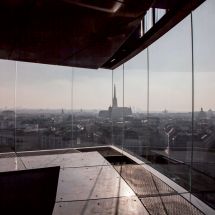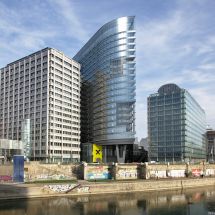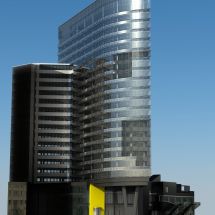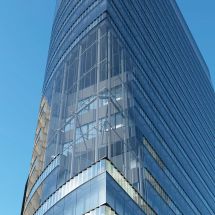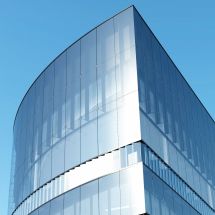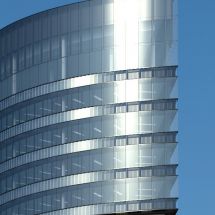RHW.2 Raiffeisen Konzernzentrale Wien
An Energetic Masterpiece
The nearly 80-meter-high building is the world's first passive office skyscraper and is considered an international showcase for climate protection. The design for the high-rise, an extension to the existing Raiffeisen-Haus on the Vienna Danube Canal, comes from architects Hayde and Maurer. Together with the architects, Vasko+Partner developed the ecological concept for the office skyscraper, aiming to minimize energy demand while optimally utilizing local resources.
The highlights of the building technology concept include a mix of photovoltaics, cooling using water from the Danube Canal, geothermal energy utilization, building component activation, combined heat and power generation using biogas, and a climate facade. The 11,000 square meters of climate facade ultimately played a key role in achieving the passive house standard. The core of the technical building equipment is the combined heat and power generation (CHP) based on biogas. Forty percent of the heat demand is supplied by CHP, 38 percent from the waste heat of the data center, seven percent from geothermal energy, and 15 percent are covered by district heating. For cooling, around 28 percent of the energy demand is achieved using Danube Canal water, eight percent from geothermal energy, 29 percent from the compression cooling machine, and 33 percent from the absorption cooling machine. For the climate protection high-rise, a heating energy demand of 14 kWh/m²a, a cooling energy demand of 9 kWh/m²a, and a primary energy demand of less than 120 kWh/m²a have been calculated. The measures planned by Vasko+Partner will achieve a reduction in energy consumption of over 50 percent compared to comparable office buildings with conventional building services.
Heating and Cooling with Concrete
For the building component activation, so-called cold pipes were already installed in the ceilings before the completion of the building. This cools the concrete and influences the room air temperature. Since suspended ceilings are not possible with building component activation, special sound-absorbing walls and floor coverings were selected.
Not least, the building shines not only with its so-called inner values but also due to the facade lighting using LEDs, an idea of architects Hayde and Maurer. However, with the handover in December 2012, Vasko+Partner's part is not yet completed. A building operation optimization phase will follow. The additional costs for energy efficiency will be amortized in 14 years. In the building's foyer, the energy flows are displayed in real-time using multimedia.
| Architecture | Atelier Hayde Architekten - Architektur Maurer Fertigstellung: 2012 |
| Full design team | Vasko+Partner |
| Further data | Bauherr: Raiffeisenhaus Wien GesbR Generalkonsulent: Vasko+Partner Fertigstellung: 2012 |
